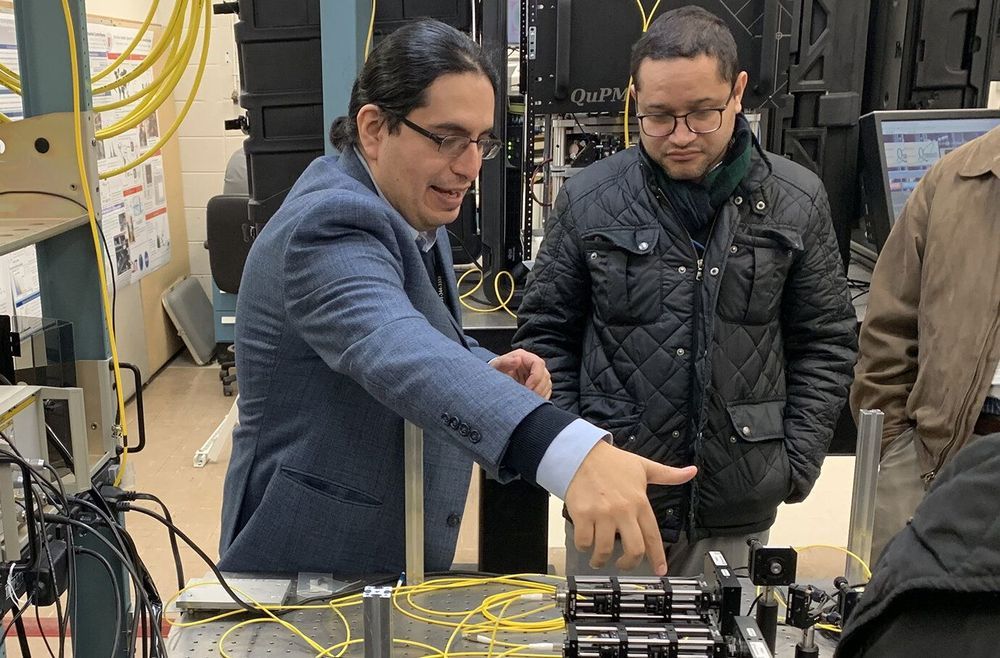Scientists from the U.S. Department of Energy’s Brookhaven National Laboratory, Stony Brook University, and DOE’s Energy Sciences Network (ESnet) are collaborating on an experiment that puts U.S. quantum networking research on the international map. Researchers have built a quantum network testbed that connects several buildings on the Brookhaven Lab campus using unique portable quantum entanglement sources and an existing DOE ESnet communications fiber network—a significant step in building a large-scale quantum network that can transmit information over long distances.
“In quantum mechanics, the physical properties of entangled particles remain associated, even when separated by vast distances. Thus, when measurements are performed on one side, it also affects the other,” said Kerstin Kleese van Dam, director of Brookhaven Lab’s Computational Science Initiative (CSI). “To date, this work has been successfully demonstrated with entangled photons separated by approximately 11 miles. This is one of the largest quantum entanglement distribution networks in the world, and the longest-distance entanglement experiment in the United States.”
This quantum networking testbed project includes staff from CSI and Brookhaven’s Instrumentation Division and Physics Department, as well as faculty and students from Stony Brook University. The project also is part of the Northeast Quantum Systems Center. One distinct aspect of the team’s work that sets it apart from other quantum networks being run in China and Europe—both long-committed to quantum information science pursuits—is that the entanglement sources are portable and can be easily mounted in standard data center computer server racks that are connected to regular fiber distribution panels.
